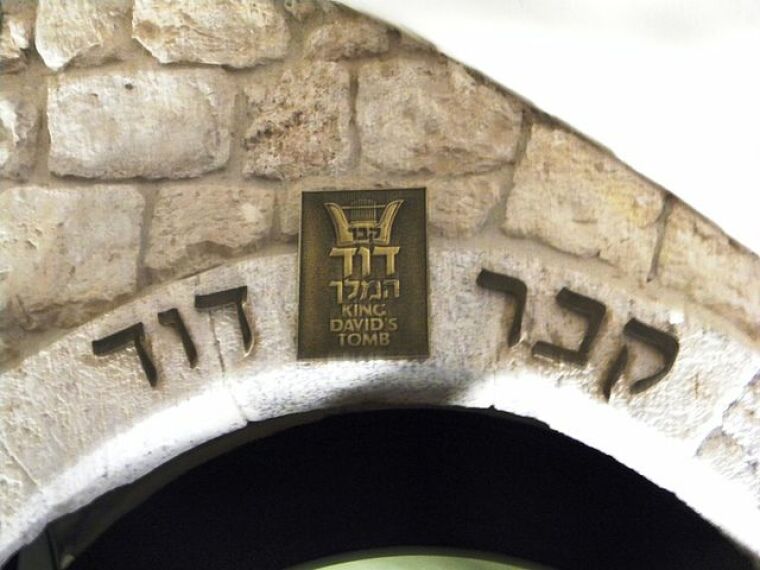Researcher confirms historical existence of 53 Biblical figures

A professor at Purdue University has recently confirmed in a recent study that 53 figures "mentioned in a Bible have been identified in the archaeological record."
Lawrence Mykytiuk, an associate professor of library science at Purdue University, has developed a unique system to compare the names of the Biblical figures with inscriptions discovered on archaeological digs.
In order to determine the historicity of a Biblical figure, the Biblical name must match the name on an authentic inscription, with no possibility of a forgery. The names on the Bible and on the inscription must match in terms of setting and time period. Additionally, the Biblical figure must also have at least three specific details identifying an individual, such as name, father's name and title.
"If it matches the same three mentions in Scripture, it's a virtual certainty," said Mykytiuk, according to Times of Israel.
"There might be a few people with the same name, father's name, but same title? That's stretching it. I consider it a virtual certainty, either a dead ringer or virtual certainty," he continued.
Mykytiuk, who describes his system as "a way to develop historicity," was able to verify kings, pharaohs, high priests and scribes by studying 94 inscriptions.
He noted that all the names are male, but he said he is "hoping to identify a woman from an inscription."
The professor, however, cautioned that the verifications of Biblical names do not necessarily verify the Biblical events involving these individuals.
One of the names verified by the professor was King David himself, from 1,000 B.C. He was able to match the protagonist of Samuel I and the "House of David" wall inscription found at the Tel Dan excavations in northern Israel.
"King of Israel' was in one line," Mykytiuk said. "The next line read 'Melech Beit David.' It was in Aramaic, by the enemies, the Arameans, who conquered Tel Dan and indicated a victory monument, a stele, a big sign in stone. The Israelites reconquered it, and smashed [the stele] to pieces that they used to make a wall," he said.
Another Biblical figure on Mykytiuk's list was King Hezekiah, who was mentioned in the Book of Kings. Hezekiah's reign in the eighth century B.C. was confirmed when a seal bearing his name was discovered in Jerusalem in December 2015.
So far, Mykytiuk has verified eight kings of the Northern Kingdom of Israel and six from the Southern Kingdom of Judah. The professor is continuing his verifications involving figures from the New Testament, and his next article will include verifications of 23 political figures from the second major part of the Bible. He said that the New Testament verifications, unlike the ones in the Old Testament, will include both men and women.
Mykytiuk, who became interested in Biblical verifications in 1992, is hoping to finish his article about New Testament religious figures, such as John the Baptist, Gamaliel and the high priests, in 2017.
 Christians don't have to affirm transgenderism, but they can’t express that view at work: tribunal
Christians don't have to affirm transgenderism, but they can’t express that view at work: tribunal Archaeology discovery: Medieval Christian prayer beads found on Holy Island
Archaeology discovery: Medieval Christian prayer beads found on Holy Island Presbyterian Church in America votes to leave National Association of Evangelicals
Presbyterian Church in America votes to leave National Association of Evangelicals Over 50 killed in 'vile and satanic' attack at Nigerian church on Pentecost Sunday
Over 50 killed in 'vile and satanic' attack at Nigerian church on Pentecost Sunday Ukrainian Orthodox Church severs ties with Moscow over Patriarch Kirill's support for Putin's war
Ukrainian Orthodox Church severs ties with Moscow over Patriarch Kirill's support for Putin's war Islamic State kills 20 Nigerian Christians as revenge for US airstrike
Islamic State kills 20 Nigerian Christians as revenge for US airstrike Man who served 33 years in prison for murder leads inmates to Christ
Man who served 33 years in prison for murder leads inmates to Christ


 Nigerian student beaten to death, body burned over ‘blasphemous’ WhatsApp message
Nigerian student beaten to death, body burned over ‘blasphemous’ WhatsApp message 'A new low': World reacts after Hong Kong arrests 90-year-old Cardinal Joseph Zen
'A new low': World reacts after Hong Kong arrests 90-year-old Cardinal Joseph Zen Iran sentences Christian man to 10 years in prison for hosting house church worship gathering
Iran sentences Christian man to 10 years in prison for hosting house church worship gathering French Guyana: Pastor shot dead, church set on fire after meeting delegation of Evangelicals
French Guyana: Pastor shot dead, church set on fire after meeting delegation of Evangelicals ‘Talking Jesus’ report finds only 6% of UK adults identify as practicing Christians
‘Talking Jesus’ report finds only 6% of UK adults identify as practicing Christians Mission Eurasia ministry center blown up in Ukraine, hundreds of Bibles destroyed: 'God will provide'
Mission Eurasia ministry center blown up in Ukraine, hundreds of Bibles destroyed: 'God will provide' Church holds service for first time after ISIS desecrated it 8 years ago
Church holds service for first time after ISIS desecrated it 8 years ago Burger King apologizes for 'offensive campaign' using Jesus' words at the Last Supper
Burger King apologizes for 'offensive campaign' using Jesus' words at the Last Supper Uganda: Muslims abduct teacher, burn him inside mosque for praying in Christ’s name
Uganda: Muslims abduct teacher, burn him inside mosque for praying in Christ’s name